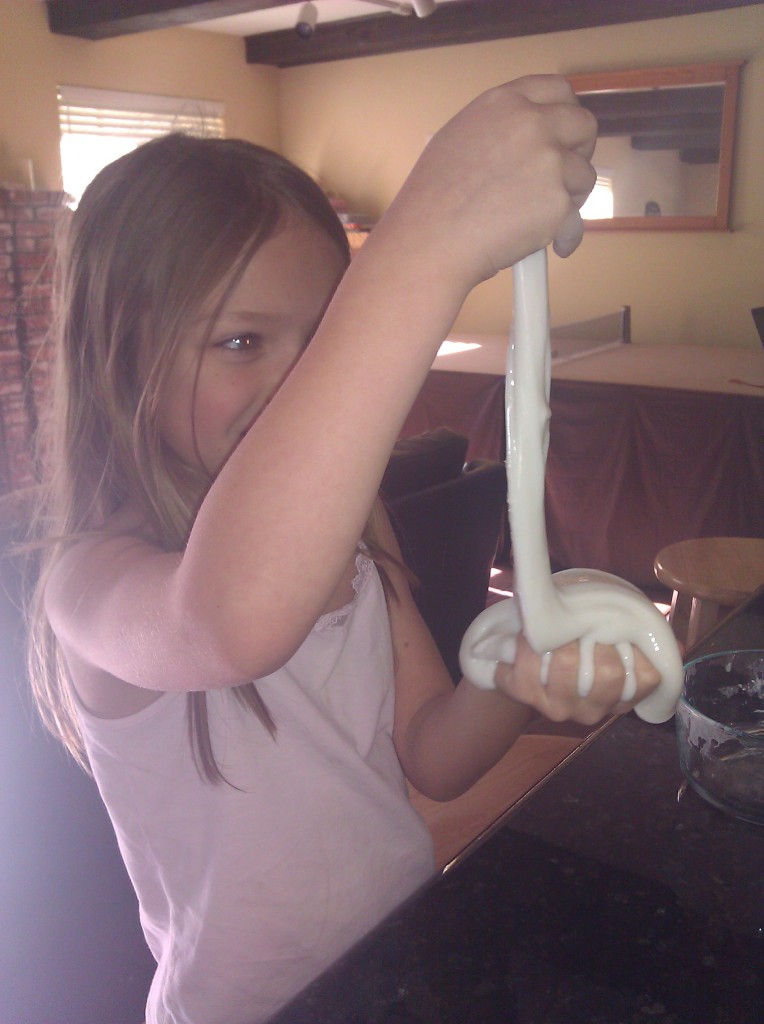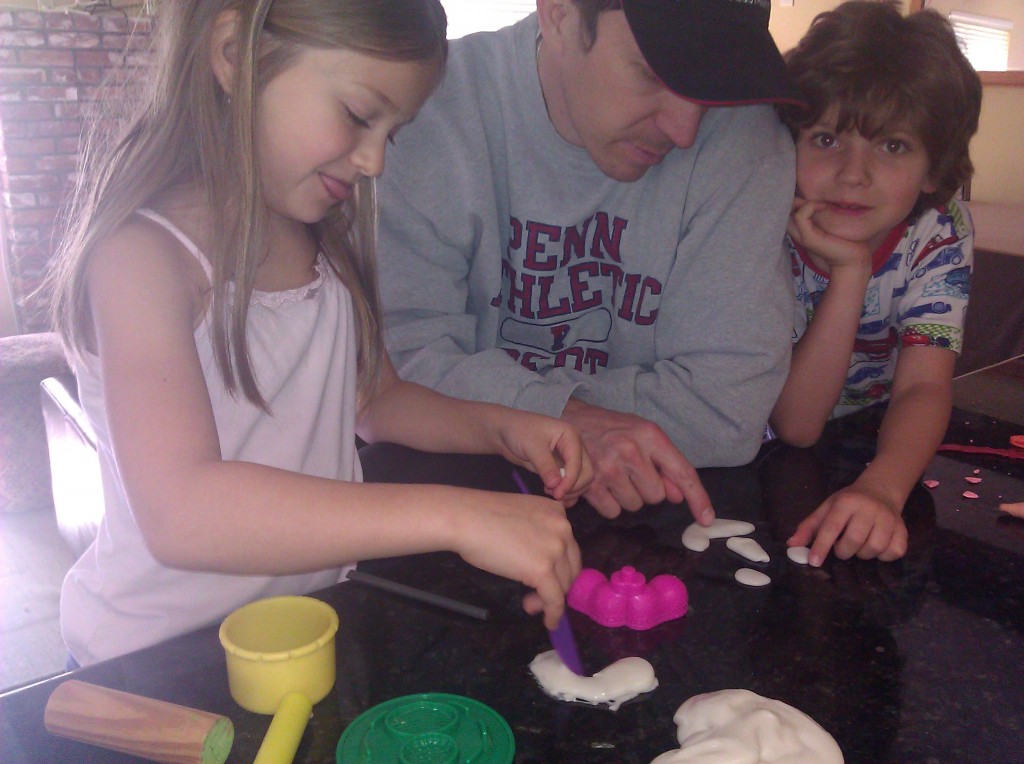Flubber is a fun, putty-like substance that is different than regular play dough. It flows and moves but it is not as liquid as slime. You have to give this stuff a try. It is super easy to make and my kids LOVE to play with it. BONUS–there is a lot of science that can be discussed with this stuff!
I used this recipe from Food.com
- 1 1/2 cups warm water
- 2 cups white glue
- food coloring (I didn’t use this)
- 1 1/3 cups warm water
- 3 teaspoons borax
Directions:
- In one container mix 1 1/2 cups warm water, white glue and a few drops of food coloring.
- In a second container mix 1 1/3 cups of warm water and Borax.
- Mix the Borax mixture into the glue mixture until combined. (may be some liquid in bottom of container).
- Place Flubber on a tray and let stand for a few minutes before playing with it!
- Store in air tight container.
Read more at: http://www.food.com/recipe/flubber-134095?oc=linkback
You can use the extra borax in your laundry. Works wonderfully on whites! (I tested this out because we bought the extra big box of borax for our Flubber too!)
Science of Flubber: It’s not just for little kids!
Definition:
Flubber is a polymer. Polymers are very long chains of repeating molecules. A chemical reaction between the polymer from the white glue (polyvinyl acetate) and the borax (borate ions) causes the molecules to link together in a 3-dimensional configuration creating FLUBBER!
Properties
“Flubber is a non-Newtonian fluid that flows under low stress, but breaks under higher stresses and pressures. This combination of fluid-like and solid-like properties makes it a Maxwell solid.” (Quoted from “Wikipedia”)”
Well that’s all well and good but does it help us learn anything?
I recently used Flubber at a book club meeting to visualize glacial flow. Flubber acts a lot like glacial ice. When it is cold it flows slowly. When it is warm it flows quickly. When you pull at it quickly it shears–just like when glaciers fall off a cliff into the ocean. (See the first source below for more information on demonstrating glacial flow with Flubber.)
Another use for flubber in teaching is to demonstrate a chemical reaction. By combining two different elements you can create a completely different substance.
Here are a few everyday objects that are made with polymers:
- anything plastic
- proteins, such as hair, nails, tortoise shell
- cellulose in paper and trees
- DNA
- silly putty
- rubber
I hope that you will find time to make and play with Flubber with your kids. My husband has been playing with flubber with my daughter the entire time I have been writing this article. PROOF that it is as fun for adults and children to play with! Enjoy!
You can buy the Magic School Bus Polymer Lab from Amazon and help support Hands On Learning 4 All.com
Sources:


